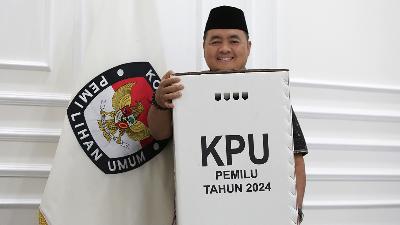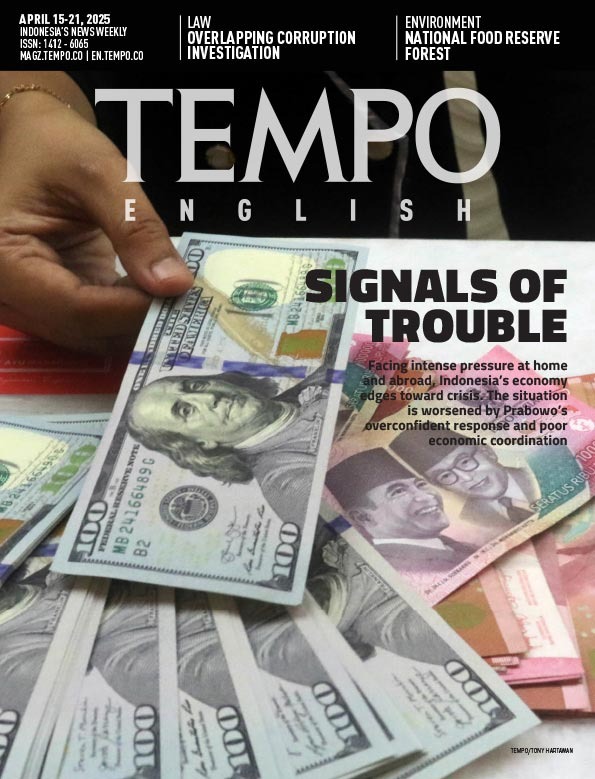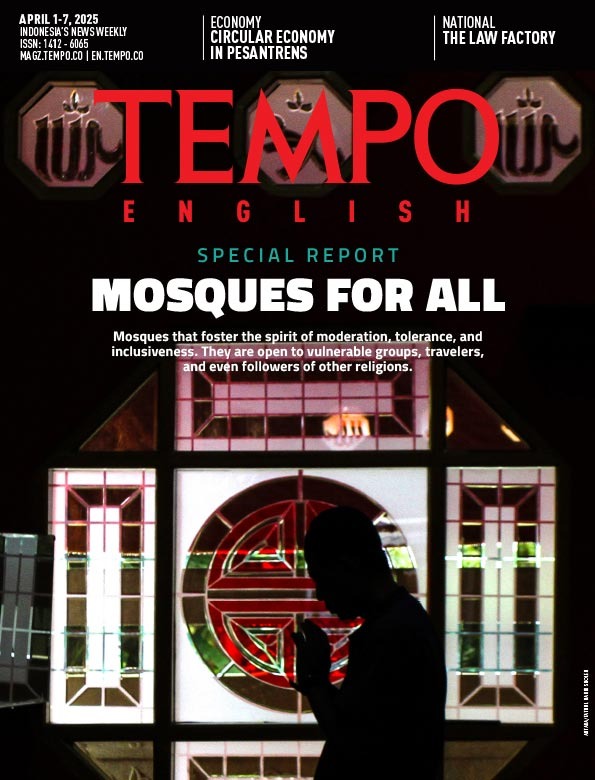The Plight of the Rohingya People in Refugee Camps
Monday, October 21, 2024
Uncertain future looms over Rohingya refugees in Indonesia. They are also struggling with various limitations.
arsip tempo : 174547509394.
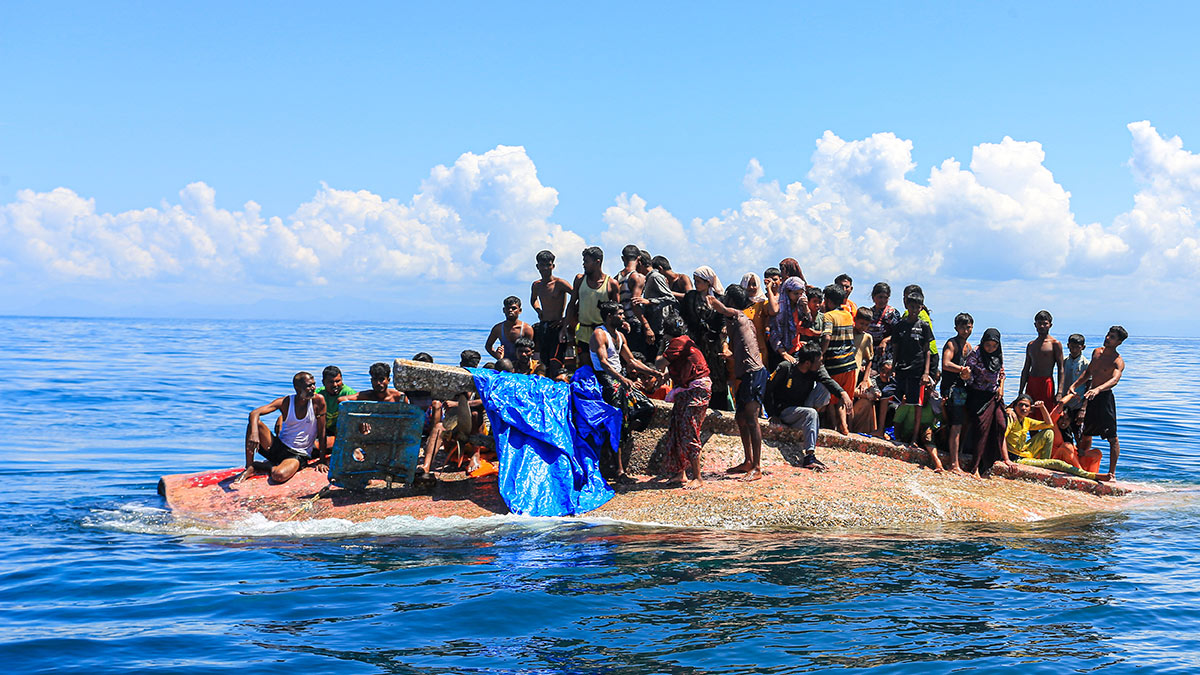
SEVEN years ago, the life of Abdu Rahman, a 25-year-old Rohingya refugee, spiraled to its lowest point. The genocide in Myanmar left him orphaned. His father, Monir Ahmad, who worked as an Arabic teacher, and his mother both died in 2017.
At that time, he was still in high school in Maungdaw. “I was forced to flee to Bangladesh along with the villagers,” said Abdu when met at the refugee camp in Mina Raya Building, Gampong Leun Tanjung, Pidie, Aceh, on Thursday, October 3, 2024.
Life in the Cox’s Bazar camp in Bangladesh did not improve. The camp was extremely overcrowded. Criminality ran rampant. Violence against refugees was an everyday occurrence. “The future is truly bleak,” he said. Abdu eventually decided to escape from Bangladesh. He became more determined after three of his younger siblings, two girls and a boy, died in a fire in the camp.
He left, bringing his younger sister along, using the services of a smuggler to reach Aceh in early November 2023. They paid Rp14 million (around US$900) per person and had to sail the ocean for 17 days. The journey was terrifying. The smugglers treated them very poorly, often beating them and not providing food.
After a week at sea, their food and water supplies ran out. They waited for days until rain fell to get drinking water. “When we reached the Andaman Sea, we were hit by a terrifying storm and heavy rain. We almost died,” Abdu recounted.
Their bad luck did not end there. Their boat stopped in the middle of the ocean for days due to a lack of fuel. A woman in their group died on the boat because of dehydration.
Fortunately, the boat was able to sail again after receiving fuel. “Finally, we landed in Aceh on November 19, 2023,” he said. In Aceh, although living in a cramped refugee tent, Abdu felt safer.
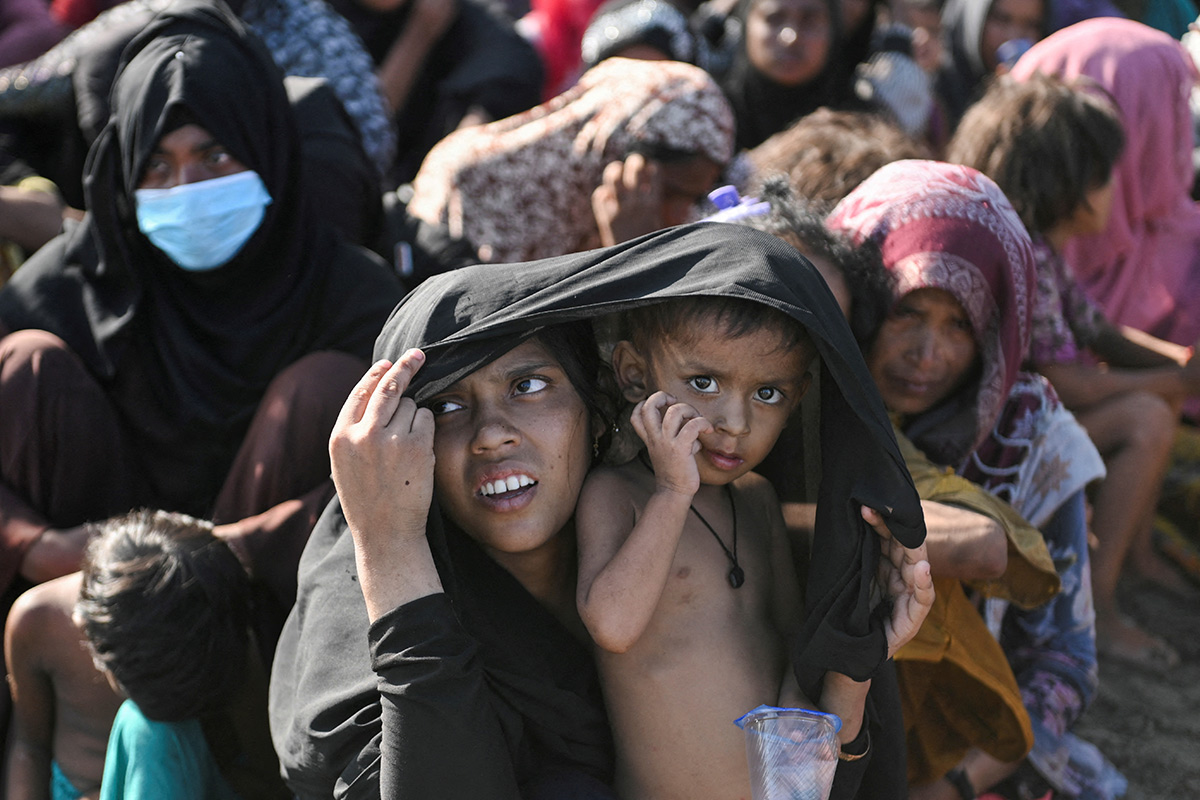
A Rohingya Muslim woman reacts as she rests on a beach following her arrival in Blang Raya, Pidie, Aceh Province, Indonesia, December 10, 2023. REUTERS/Stringer
Abdu has a talent for writing. While in Cox’s Bazar, he produced two poetry books that tell his story as a refugee. The first book, titled Rohingya Odyssey, was published by Amazon in September 2023. The book Warrior’s Verse was published two months later.
Abdu dreams of obtaining a higher education. He wants to become a human rights activist and advocate for the rights of marginalized Rohingya people. He now spends his days in Aceh teaching English to refugee children. He also received a scholarship in health sciences from the University of the People in the United States by taking distance learning courses.
After years of living in refugee camps, Abdu still awaits the opportunity to enter a resettlement program in a third country. “I have been through so much. All I want is a chance to live peacefully and safely,” he said.
Abdu Rahman is one among thousands of Rohingya refugees in Indonesia. They lost their citizenship after the Myanmar government enacted a citizenship law in 1982.
Currently, over a million Rohingya people are refugees worldwide. They are scattered across many countries. Among them, the largest number resides in Bangladesh, with nearly 1 million people. In Malaysia, the number is 109,700, in Thailand 500, and in India 22,500.
The United Nations High Commissioner for Refugees (UNHCR) records that Rohingya people have been arriving in Indonesia since 2009. As of August 2024, their number reached 2,323. This figure has increased from 2023 (2,288) and 2022 (574). Their presence is spread from Aceh, North Sumatra, Riau, to South Sulawesi.
•••
THERE are two types of countries that serve as places of refuge. First, countries that have ratified the 1951 Refugee Convention and the 1967 Protocol. Such countries become the final destination for refugees through resettlement programs. When accepted in these countries, refugees are guaranteed full rights. The second type of country, which has not ratified the convention, usually serves only as a transit point, like Indonesia.
Although it has not ratified the convention, Indonesia cannot refuse refugees due to its obligation under the principle of non-refoulement, which is part of international law. This principle prohibits a country from rejecting or forcibly returning refugees to dangerous territories. However, this status means that Indonesia is not obligated to fulfill all the rights of refugees. This is also reflected in Presidential Regulation No. 125/2016 on the Handling of Refugees from Abroad.
This presidential regulation divides roles in managing refugees. Indonesia, through regional governments, is obligated to provide shelter locations. Meanwhile, meeting the daily needs of refugees is managed by United Nations agencies, such as UNHCR and the International Organization for Migration (IOM), as well as non-governmental organizations.
Despite this division of roles, meeting the obligation to provide adequate shelter for refugees remains to be an issue for Indonesia. In Pekanbaru, Riau, this uncertainty is evident. There are eight accommodations that are fairly adequate for refugees, including guesthouses, hotels, and shelters. In these locations, 965 refugees are housed, including 296 Rohingya people. However, these shelters are no longer sufficient.
Since mid-2024, about 470 new Rohingya refugees have arrived. After temporarily occupying sidewalks, they eventually set up tents on vacant land near the Pekanbaru Immigration Detention Center. Now, the landowner has complained, and they must be relocated immediately. “We have coordinated with the regional assets department to provide an overview of government assets, both vacant land and unused buildings, for the Rohingya refugees,” said Rio Okto Edward, Head of the National Vigilance and Conflict Handling Section of the Pekanbaru National and Political Unity Office (Kesbangpol), on Friday, October 11.
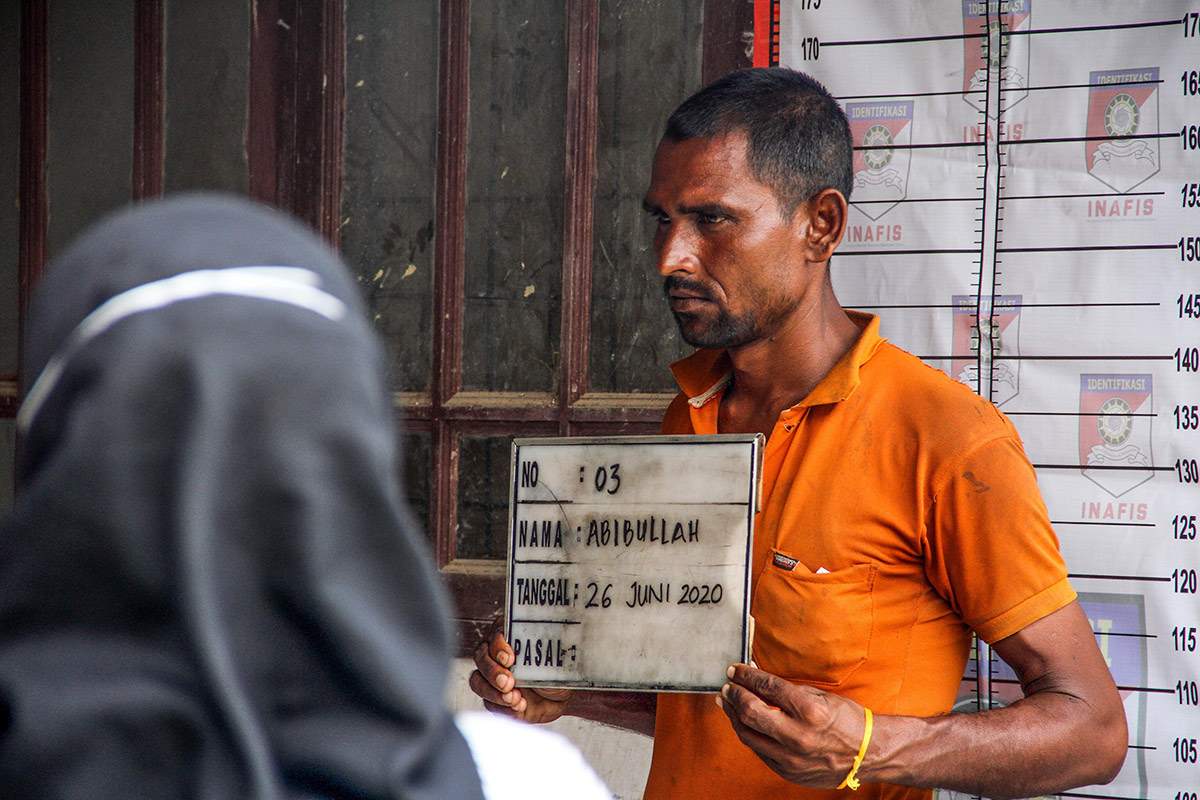
A Rohingya man undergoes identification and examination at a temporary shelter, former Punteuet Immigration office in Blang Mangat, Lhokseumawe, Aceh, Friday, June 26, 2020. ANTARA/Rahmad
In Aceh, problems are also arising. There are frequent protests against the presence of shelters. At the end of 2023, some refugees in Banda Aceh even faced persecution. At that time, narratives of hatred and false news about them circulated widely, allegedly related to efforts to garner sympathy and votes ahead of the general and regional elections.
Such persecution has not occurred recently. However, rejection of refugee shelters still exists, making it difficult for local governments to find ideal locations. Brigadier Gen. (Pol) Adhi Satya Perkasa, the Executive Chief of the Foreign Refugees Handling Task Force, confirmed this information. He even observed facilities that were empty and suitable for housing refugees but could not be used due to community rejection.
As a result of this situation, many refugee shelters are inadequate. In an interview on Wednesday, September 25, Adhi expressed his concern about two shelter locations in Aceh that were camps situated on the beach, making their inhabitants always threatened by strong winds and rising tides. However, according to the latest information, the refugees in tents on Kuala Parek Beach, Sungai Raya, and Kulee, Pidie, have been relocated to other sites far from the coast.
In Lhokseumawe, the local Refugee Handling Task Force must also urgently seek new shelter locations. Head of the Lhokseumawe National and Political Unity Office, Zulkifli, revealed that the Rohingya refugees currently in the former Immigration office in Ulee Blang Mane village must be moved by the end of this month because the building will be renovated. “It is still unknown where the Rohingya refugees will be placed,” he said on Friday, October 4.
•••
FOREIGN refugees in shelters are under the responsibility of the UNHCR and IOM. These two UN agencies are obligated to fund, facilitate, and find long-term solutions for refugees in temporary host countries.
Stefano Bresaola, the Disaster Climate Resilience Program Coordinator for IOM Indonesia, stated that they assist refugees by providing housing, protection, health care, non-food items, and psychosocial support. “The assistance provided by the IOM varies depending on their needs,” he said in an online interview on Wednesday, September 25.
The UNHCR also strives to provide educational support. Some refugee children can now receive education in several public schools. “Currently, more than 700 children are registered in accredited national schools,” said Emily Bojovic, Senior Protection Officer of UNHCR Indonesia, on Wednesday, October 2.
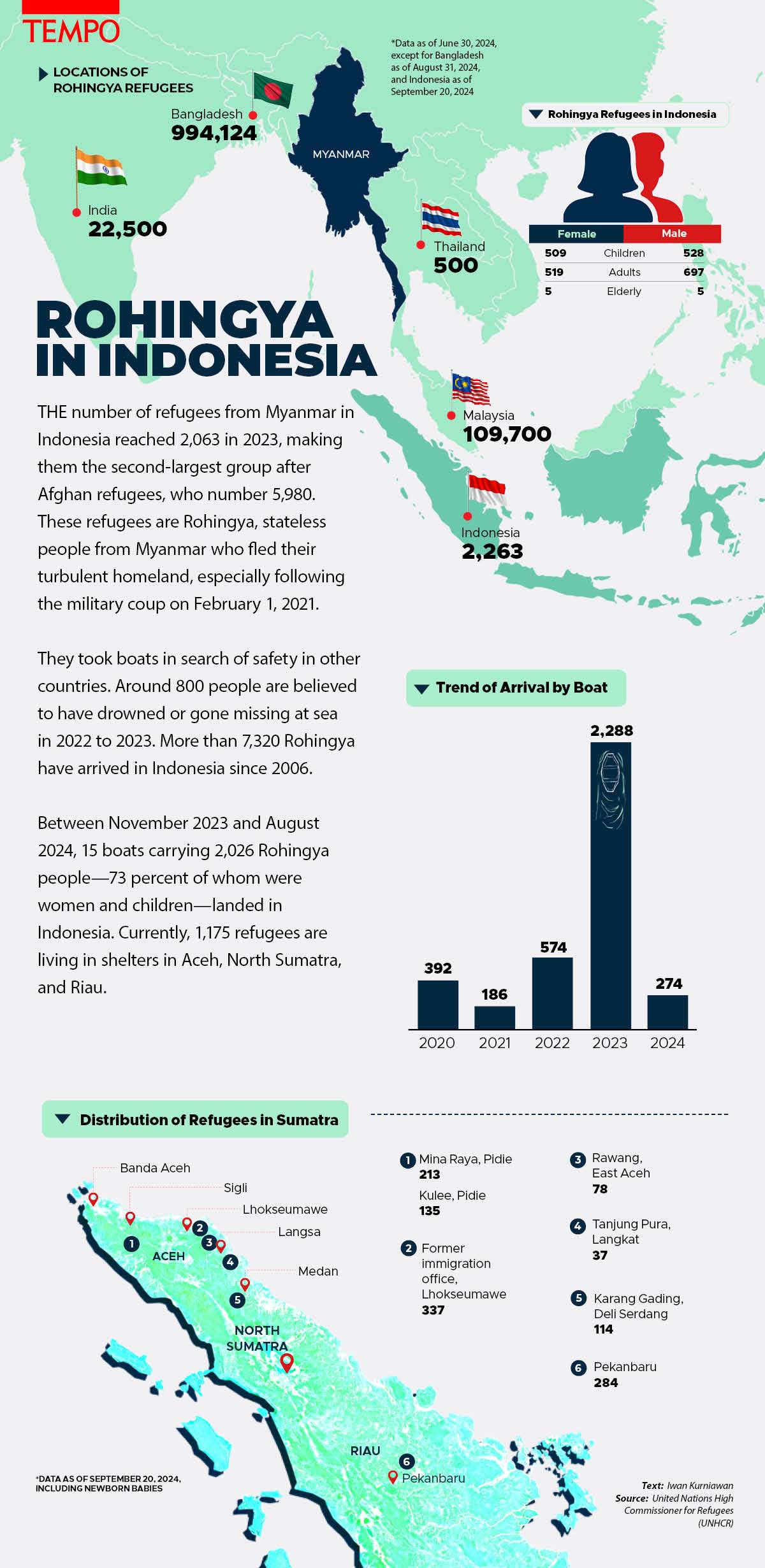
Unfortunately, many Rohingya refugee children in Aceh cannot attend school due to language barriers. As a solution, they receive informal education, learning subjects such as Indonesian, English, and writing and reading skills from volunteer teachers. They are expected to acquire the necessary skills to enter formal schooling.
In addition to education, refugees have access to free medical treatment at health care facilities ranging from community health centers to regional hospitals. “If there are patients who need to be referred to a hospital, we will be notified and seek donors to cover their treatment costs,” said Mitra Salima Suryono, Communications Officer at UNHCR Indonesia, on Wednesday, October 2. However, they are not allowed to work.
•••
ALL foreign refugees in Indonesia are in temporary status. The UNHCR continues to seek long-term solutions for them, either through resettlement in a third country or repatriation to their country of origin. Unfortunately, both solutions promise no certainty for the Rohingya refugees.
The quota offered by third countries for resettlement is minimal, less than 1 percent compared to the number of refugees worldwide. Opportunities are only open to those with skills that are needed by these countries.
The limited chances often lead refugees to lose hope. “The sad part of being a refugee is that they do not really know how to anticipate the future,” said Mitra Salima. According to this UNHCR staff member, the waiting time for resettlement varies for each person. “Of course, our goal is to find solutions for the refugees, but not everyone will find answers in a third country.”
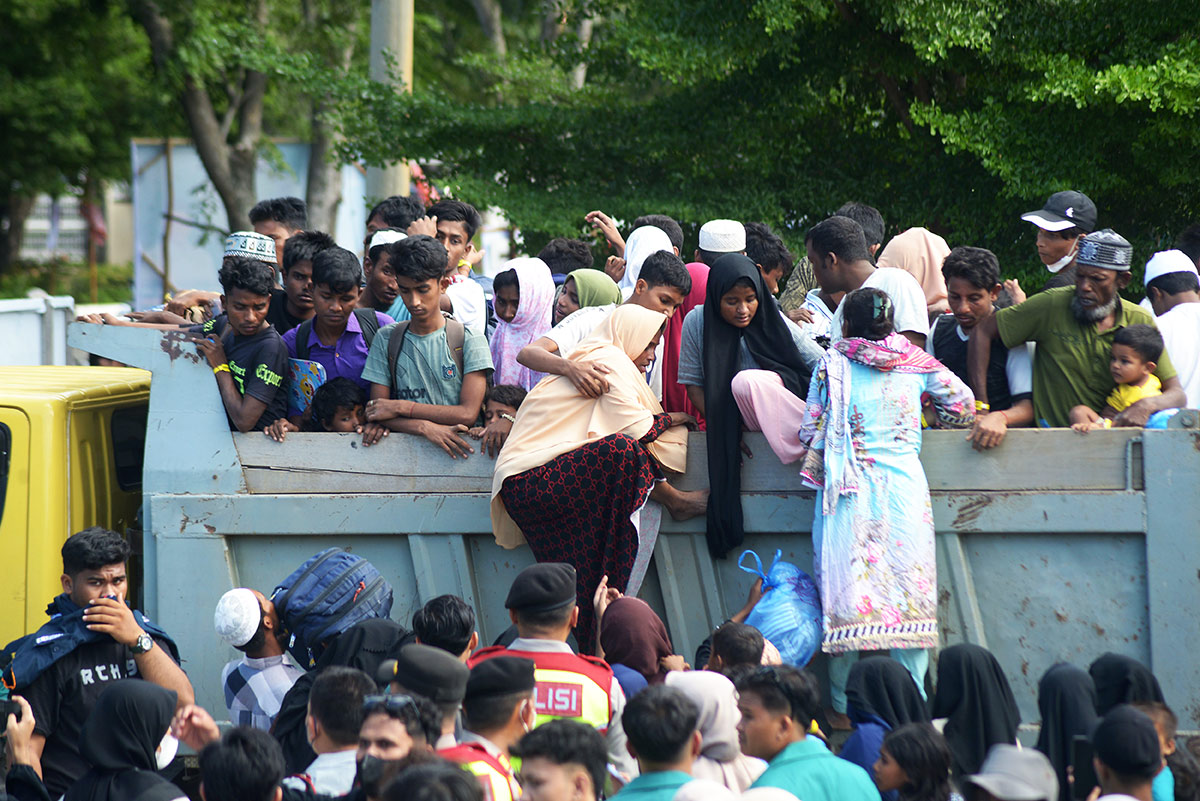
Students and police help load Rohingya refugees onto a truck during a forced relocation at the temporary shelter of the Balai Meuseuraya Aceh (BMA) building, Banda Aceh, Aceh, Wednesday, December 27,2023. ANTARA/Ampelsa
All alternatives for resettlement are being explored by the UNHCR, including through labor mobilization or education. “You can get a job in another country and go there with your family so you can eventually settle there. Or through educational scholarships, although the numbers are very small,” said Mitra.
The Foreign Affairs Ministry also strives to open wider doors for the resettlement of refugees. They actively conduct bilateral diplomacy with countries that have ratified the 1951 Convention or engage in multilateral discussions in various forums. Foreign Minister Retno Marsudi has also met several times with the UNHCR. “The Foreign Minister urged the countries party to the Convention to start accepting resettlement so that the burden does not shift to other countries,” said Rolliansyah Soemirat, spokesperson for the Foreign Affairs Ministry, on Tuesday, October 8.
While resettlement provides limited space, the opportunity for repatriation can be considered to be nonexistent. The return of Rohingya refugees to Myanmar is currently impossible. According to Emily Bojovic, Rohingya individuals face barriers because the Myanmar government does not recognize them as citizens. “Right now, I think most will not be able to go back because the situation will put their lives at risk,” she said.
Rolliansyah explained that repatriation or the return of Rohingya citizens to Myanmar will depend on the political conditions in their home country. Democracy and stability in that country will be key. “Therefore, Indonesia continues to consistently push for a resolution to the crisis in Myanmar, particularly through the ASEAN Five Point Consensus,” he said.
The five-point consensus was agreed upon on April 24, 2021, during an Association of Southeast Asian Nations (ASEAN) leaders’ meeting in Jakarta. Its contents include calls for an end to violence in Myanmar and encouraging constructive dialogue to seek peaceful solutions. However, three years later, that peaceful resolution has yet to materialize.
•••
UNTIL they can be relocated to a third country or repatriated, Rohingya refugees will remain in Indonesia. There is no certainty as to when this situation will change. Meanwhile, new refugees could potentially flood in again by the end of this year, similar to last year.
The Foreign Refugees Handling Task Force has already seen this potential. Recent exodus from Myanmar will impact this situation. Weather factors also play a role. The journey from Bangladesh to Indonesia is easier at the end of the year. Refugees typically head for India, then to the Andaman Islands. “The current flow is to the north of Aceh. Every year-end, the winds blow towards Aceh. So, even without engines, boats will certainly reach Indonesia,” said Adhi Satya Perkasa.
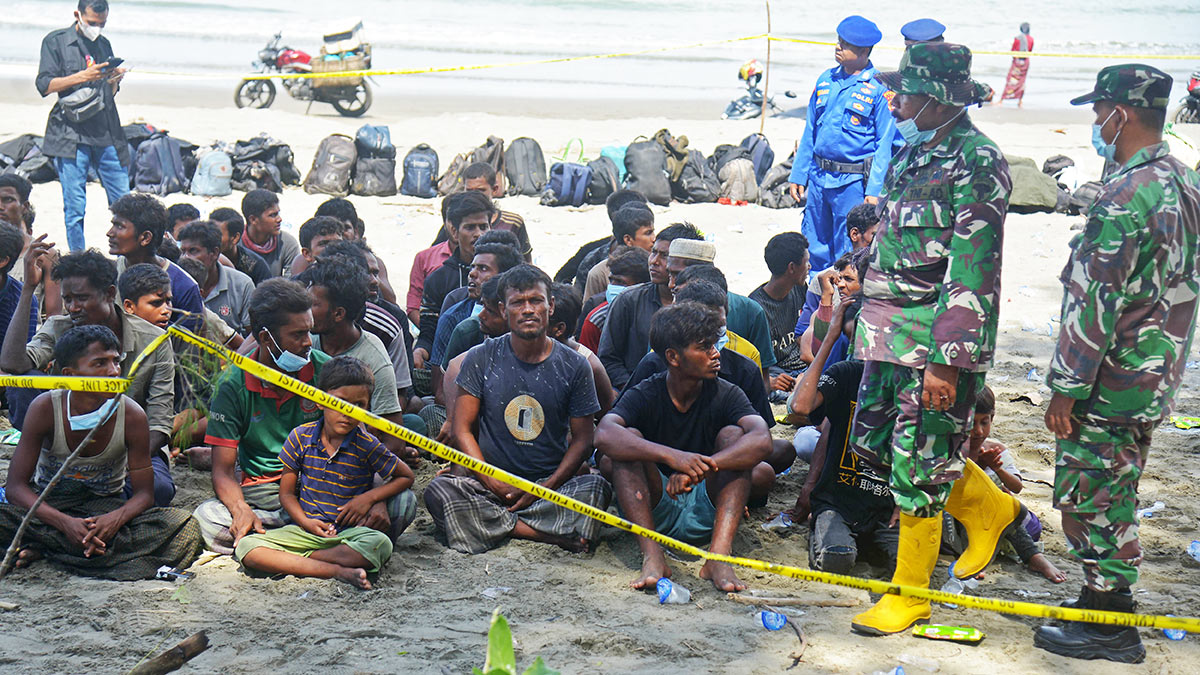
Officers collect data on newly stranded Rohingya refugees in Blang Raya Village, Pidie Regency, Aceh, Sunday, December 10, 2023. ANTARA/Ampelsa
The task force has coordinated with the Indonesian Navy to intensify patrols to prevent the influx of refugees. “We are preparing ourselves. We cannot let them all enter here,” he said.
However, preventing this influx is not easy. The cost of patrols is very high. They also have to contend with powerful smuggling networks that always seem to have good intelligence. It has been proven that they have always managed to enter when patrol boats are not around. Adhi sees the need for cooperation and diplomacy with other countries, especially Bangladesh, India, and Malaysia. “This is a shared problem,” he said.
According to Rolliansyah Soemirat, the Foreign Affairs Ministry has already taken action. The ministry continues to coordinate with the UNHCR and Bangladeshi authorities to tighten security so that no refugees leave shelters to go to third countries, whether on their own or facilitated by human trafficking syndicates. “We are also enforcing the law against the human trafficking syndicates that bring these refugees as a deterrent effect,” he said.




